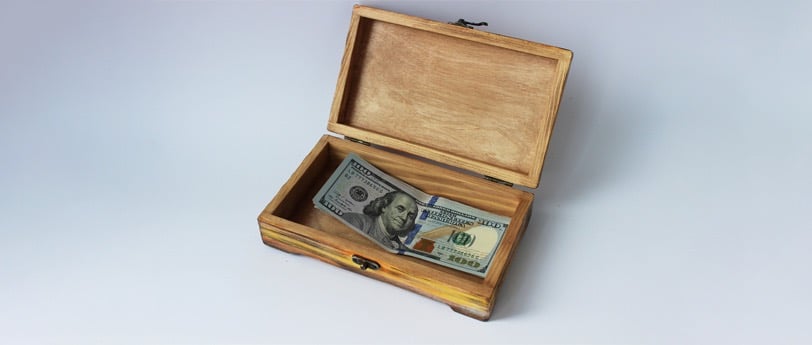📞 (858) 308-1100
✉️ contact@veslav.com
Why Your Undeposited Funds Account Might Not Match Reality – and How to Fix It
10/10/20243 min read


At Veslav Consulting, one of the most common issues we encounter during QuickBooks Online cleanup is an inaccurate balance in the Undeposited Funds account on a company’s Balance Sheet. Many small business owners find themselves puzzled when this account shows a balance that doesn’t match the actual money waiting to be deposited. This discrepancy can create confusion, make it harder to manage cash flow, and lead to mistakes in your financial reporting. So, how does this happen, and more importantly, how can you prevent it?
Let’s break it down.
What Causes Issues in the Undeposited Funds Account?
The Undeposited Funds account is meant to serve as a temporary holding place for customer payments that haven’t yet been deposited into your bank account. It helps you track the money you’ve received but haven’t deposited, so it can later be reconciled with your bank transactions. However, a series of common bookkeeping errors can cause the balance of this account to drift from reality.
Here are some of the main transaction errors we often uncover:
Payments Marked as Deposited Twice
One of the most common mistakes occurs when payments are both deposited directly into the bank account and also recorded in the Undeposited Funds account. For example, if you receive a payment and select the bank account as the deposit account instead of choosing "Undeposited Funds," QuickBooks Online immediately considers that payment deposited. If you later go to the Undeposited Funds account and record the same payment as deposited again, you’ll end up counting the payment twice on your books.Skipping the make a Bank Deposit Step
When customer payments are recorded in the Undeposited Funds account, they need to be properly transferred to the bank account using the make a Bank Deposit function in QuickBooks Online (Select + New, then Select Bank Deposit). Some users skip this step and directly add deposits to the bank account without clearing out the Undeposited Funds, leading to an inflated balance in this temporary holding account.Incorrect Matching of Bank Deposits
When reconciling your bank transactions, it’s crucial to match the deposits in your QuickBooks Online to the actual bank deposits, which might include multiple customer payments. If a deposit is incorrectly matched to a single payment instead of the entire group, it will leave other payments sitting in the Undeposited Funds account.Unapplied Customer Payments
Sometimes, payments received from customers are recorded but aren’t properly linked to an invoice. This can result in the payment sitting in the Undeposited Funds account indefinitely, even though the funds may have already been deposited in the bank.
How to Avoid Errors with the Undeposited Funds Account
To prevent your Undeposited Funds account from getting out of sync, it’s important to follow these steps carefully when recording customer payments and deposits:
Always Record Customer Payments in Undeposited Funds First
When you receive a payment, make sure to record it as going into the Undeposited Funds account – not directly into your bank account. This keeps track of payments that haven’t yet been deposited but are still sitting with you (e.g., checks or cash that need to be taken to the bank).Use the make a Bank Deposit feature in QuickBooks Online
Once you’ve physically deposited the funds into your bank account, use the make a Bank Deposit feature in QuickBooks Online to move the payments from the Undeposited Funds account to your bank account. This process should match the actual deposit you made. Be sure to group multiple payments into one deposit if that’s how you handled the bank transaction.Match Deposits to Bank Transactions Carefully
When reconciling your bank statements, carefully match deposits recorded in QuickBooks Online to the corresponding deposit in your bank account. This is especially important when multiple payments are bundled into one deposit. Avoid matching the deposit to individual payments unless that’s exactly how the money was deposited in the bank.Check for Unapplied Payments
Review the Undeposited Funds account regularly to ensure no customer payments are sitting there unnecessarily. If you notice any payments that have already been deposited, but are still listed, track down why they weren’t applied correctly – this usually means the payment wasn’t linked to an invoice or the deposit wasn’t recorded properly.
Need Help Cleaning Up Your QuickBooks Online?
Errors in the Undeposited Funds account can create significant confusion and lead to inaccurate financial reports. By following the correct steps and being mindful of how you record payments and deposits, you can maintain a clean and accurate balance sheet.
At Veslav Consulting, we specialize in QuickBooks Online cleanup services and have helped many small businesses untangle their financial records. If you’re struggling with any aspect of your bookkeeping, don’t hesitate to reach out. We’re here to help you get your books back on track, so you can focus on growing your business.
Veslav Consulting
Simplifying Your Finances,
Empowering Your Growth
Contact Us
Join our newsletter list
858-308-1100
© 2025 Veslav Consulting. All rights reserved.
